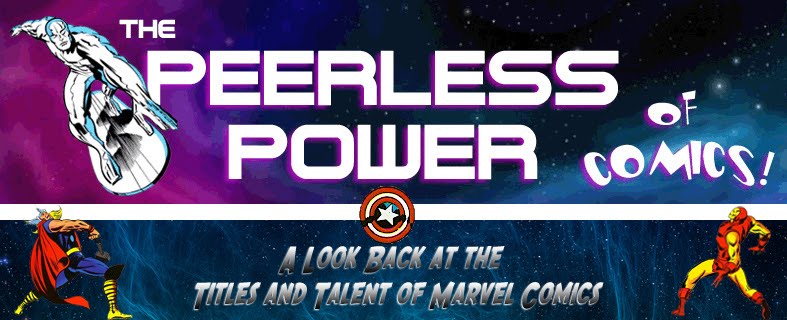Well, there's no sugar-coating this post: I have such mixed feelings about Fantastic Four #99 from mid-1970. It's not one of my favorite issues of the title, by far: The premise of the story is unbelievable (no, I'll just come out and say it, the premise is unacceptable)... the Human Torch's disappointing, juvenile behavior, charitably spun by Reed Richards as being "sick at heart," virtually throws out 98 issues of growth and maturity for the character (leading to the harsh wording of this post's title)... and there is no way anyone with a shred of rationale can buy into the no one gave anyone the chance to explain justification for things getting out of hand. Yet, with all of that said, I've tried with some difficulty over time to rationalize the events and direction of this story in my head and provide it with some sense of stability overall. (Apparently, I haven't been all that successful.)
The issue also has the dubious distinction of being published shortly before artist Jack Kirby would depart Marvel Comics for reportedly a more conducive work environment--and while you may get a sense that the frayed relationship between Kirby and writer Stan Lee may have played into the story's shaky foundation, it nevertheless reads as business as usual if... if... you can overlook some of its failings. Thanks to the "Marvel method" still being in play, we can take a fair guess as to how the story took shape: Lee provides the bare bones plot (in a nutshell, Johnny Storm is upset at his girlfriend Crystal being ordered back to the Inhumans' Great Refuge and sets out in anger to confront the royal family and retrieve her), and Kirby flushes out and draws the complete story based on his own interpretation, a formula which had worked splendidly for the most part for their nearly 9-year collaboration on the title.
Diving in, then, let's look at the tense meeting that separated Crystal from Johnny which took place four issues earlier, and see how easy it's been made for Johnny to assume the worst.
So much is said... but very little if anything has been disclosed as to why Crystal is agreeing to accompany Medusa back to the Great Refuge, or why she's needed there, though she's obviously aware of what her decision will do to Johnny. Unfortunately, the two of them keeping mum leaves Johnny both upset and anguished because he's under the impression that Crystal is leaving for good. Now wouldn't this be the time for either Crystal or Medusa to elaborate on what's going on, and assuage any worries on Johnny's part as to just why Crystal must leave?
But Crystal fudges when giving her reasons, full of regret but supplying nothing in the way of information--and Medusa, equally unforthcoming, flatly states that "There is no more that may be said," which from Johnny's point of view must sound preposterous. To add insult to injury, the true reason for Crystal's departure isn't shrouded in secrecy, not in the least; and if we skip ahead and disclose that reason now, this scene could see everything cleared up with just a simple conversation between the three of them, leaving everyone at ease and no consternation whatsoever:
J: "Crystal, why are you leaving? This... this isn't for good, is it??"
C: "Oh Johnny, of course not! You see, Black Bolt was stricken during a radiation experiment, and my family needs me to attend to him by transmitting micro-shock waves to keep his heart beating, until Gorgon can return with a vial of serum that will restore his strength."
M: "That is precisely the situation, Johnny Storm. Crystal's powers are specifically suited to this task."
J: "I understand. I'll let Reed and the others know. Please give our best to Black Bolt--we're all pulling for him." (gives Crystal a kiss on the cheek, a smile, and a "Hurry back, and let me know if you need me" to send her on her way)
(No idea where Gorgon could possibly be returning from--an intra-Refuge apothecary deep in the caverns of the Alpha Primitives? A pharmacy franchise doing business in the middle of the Himalayas?)
So why keep the situation with Black Bolt under wraps? Why give Johnny the impression that the Inhumans have decided that Crystal should return to the Great Refuge permanently, and "no more may be said"? You know why--so we could all fork over 15¢ for this "epic issue" to see the Torch go after Crystal and lash out at the rest of the Inhumans in his "wild" rage. Flame on!





























